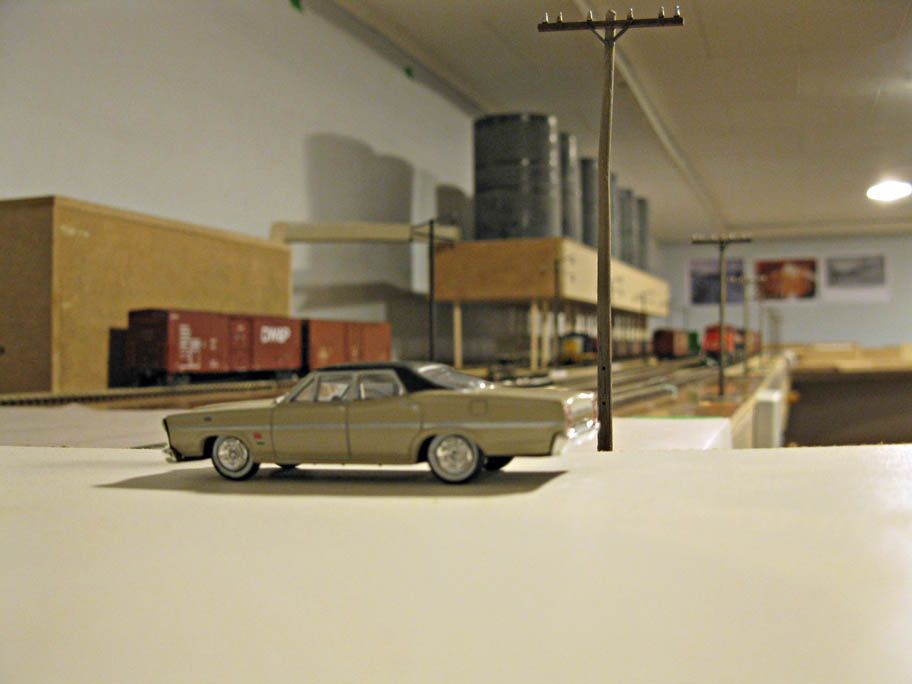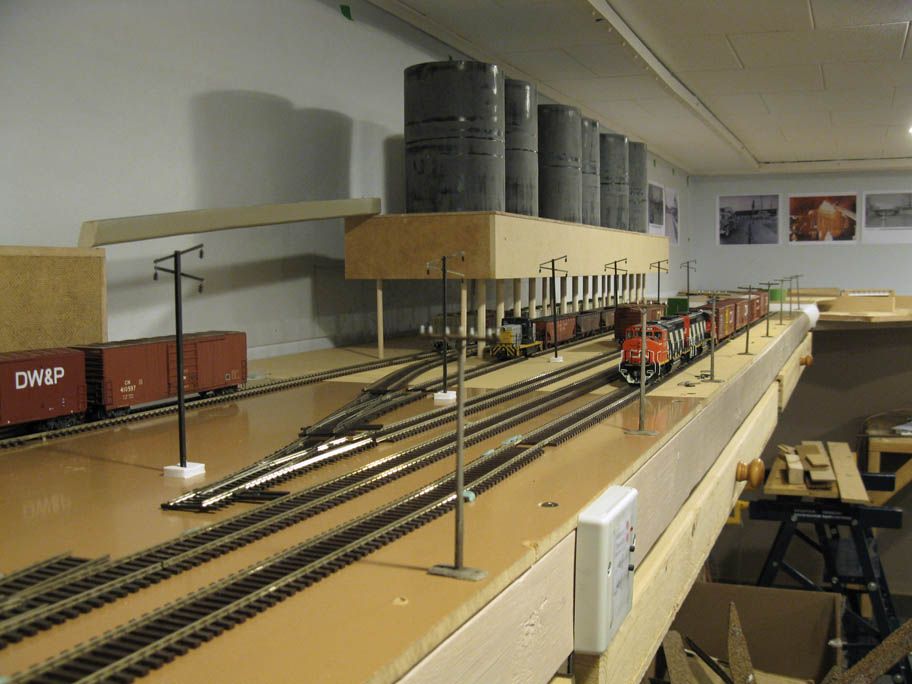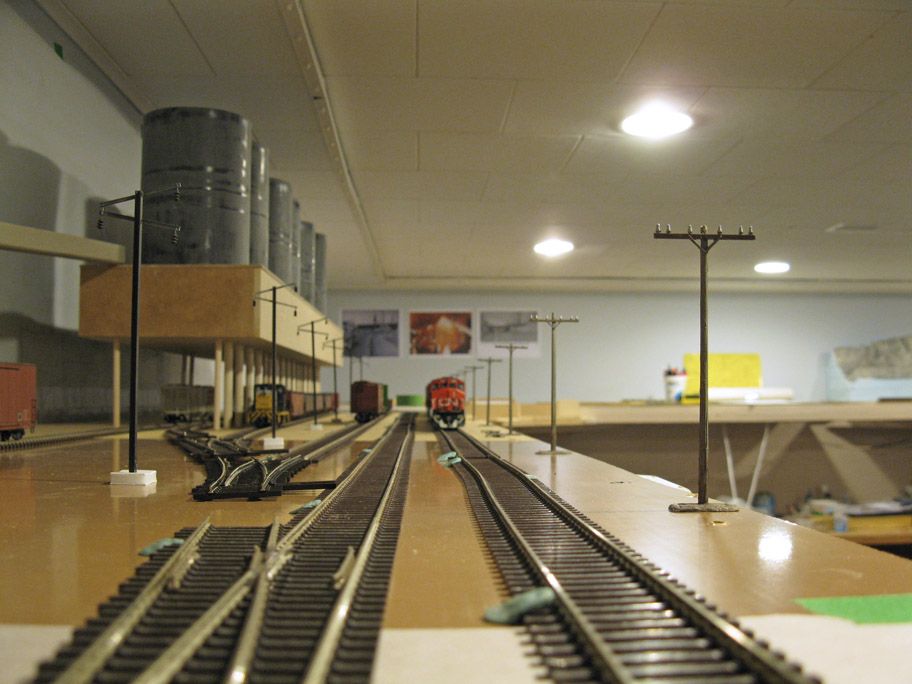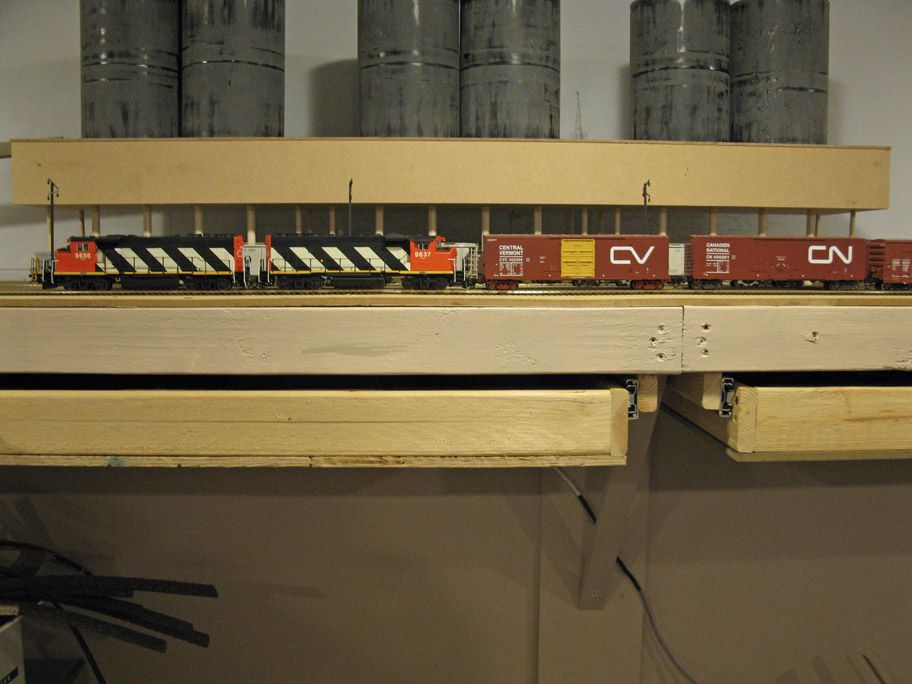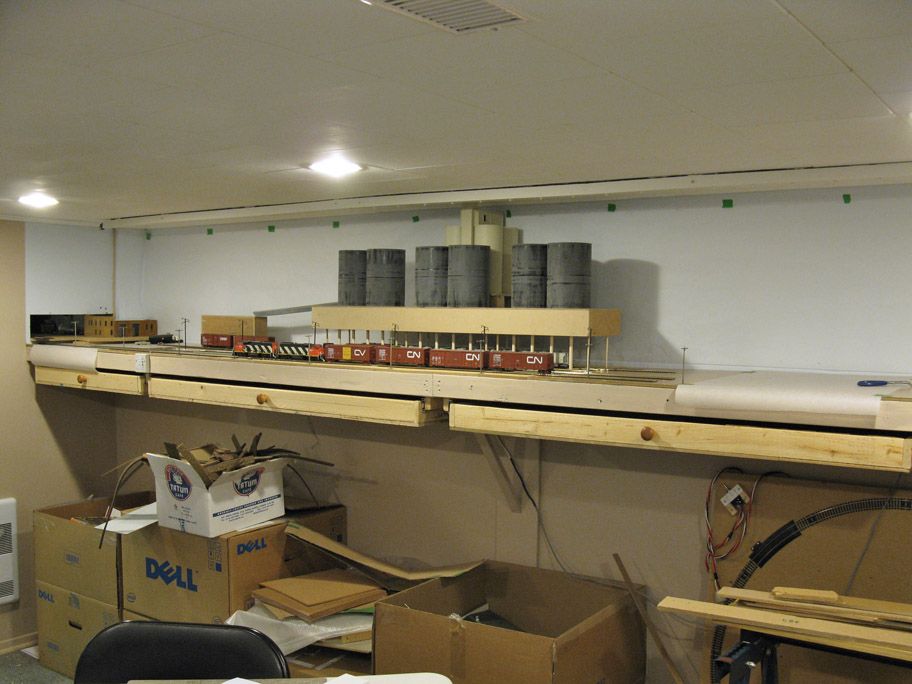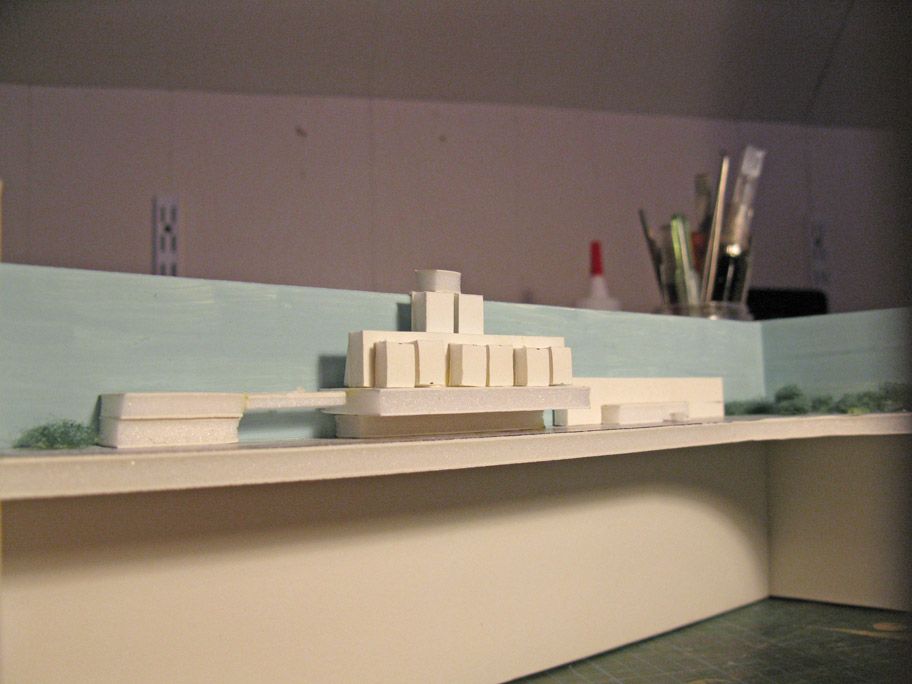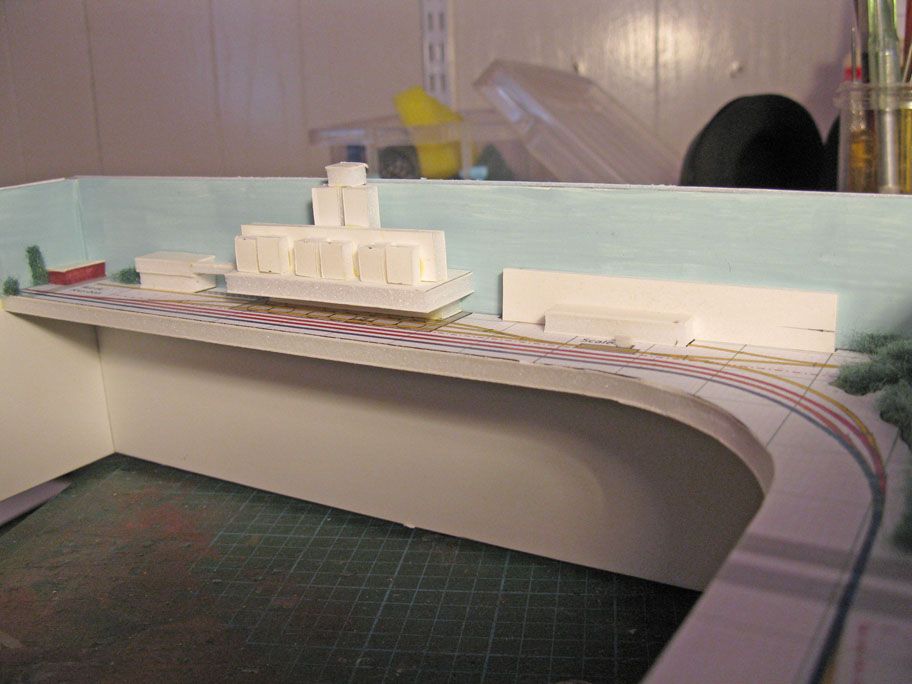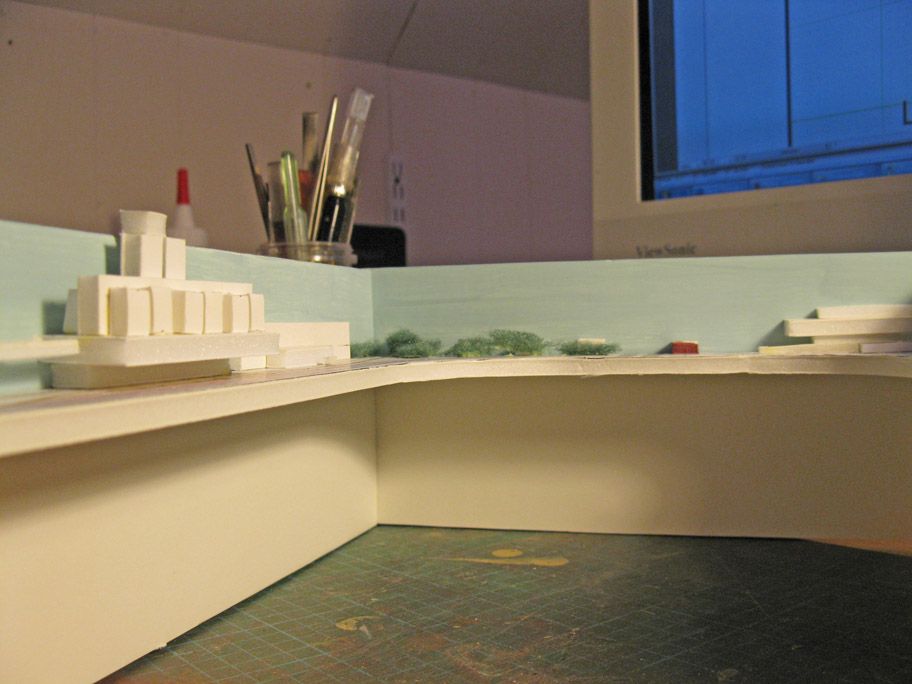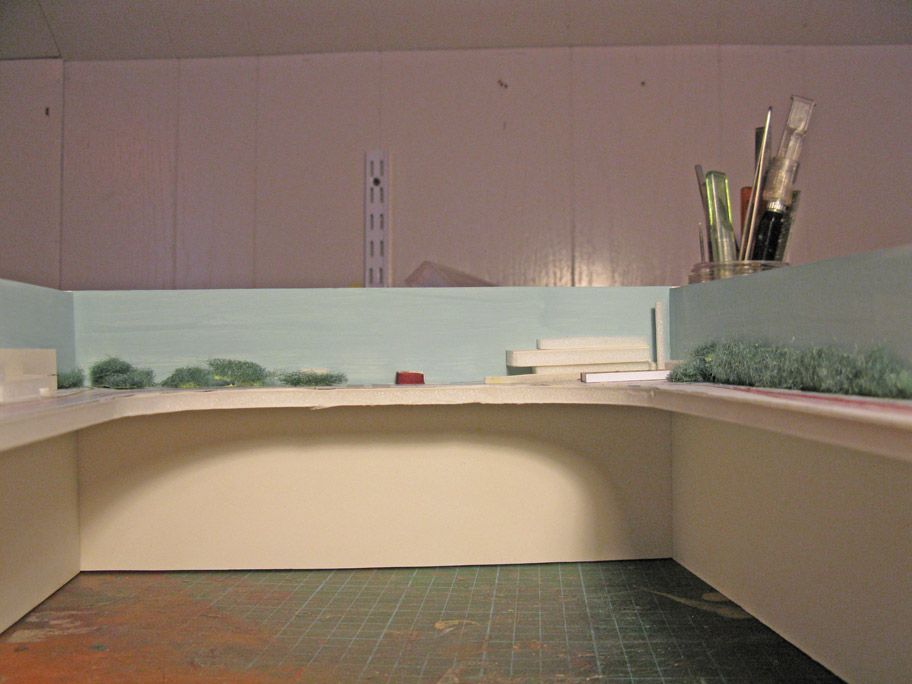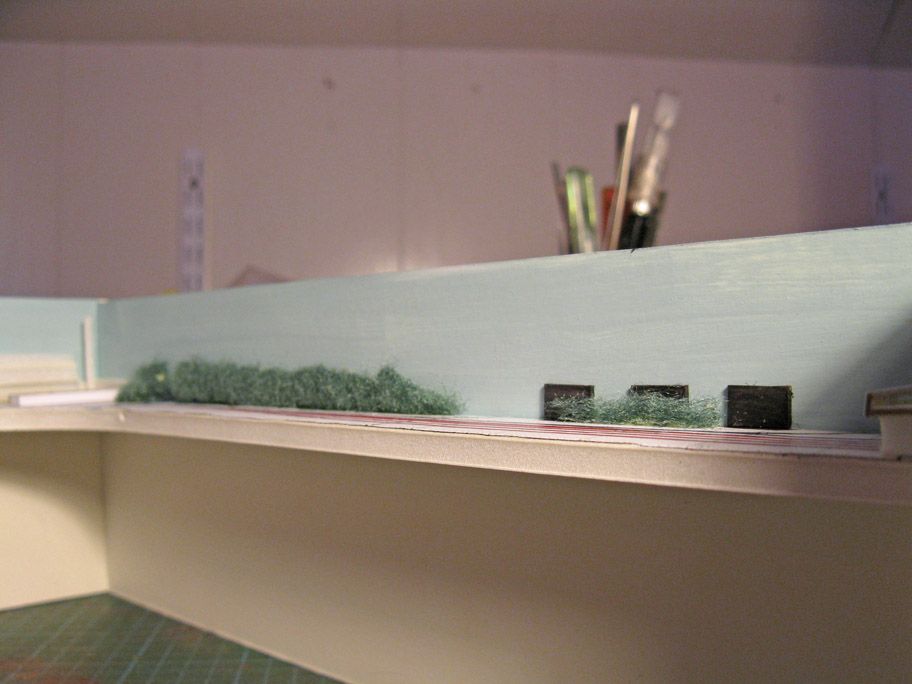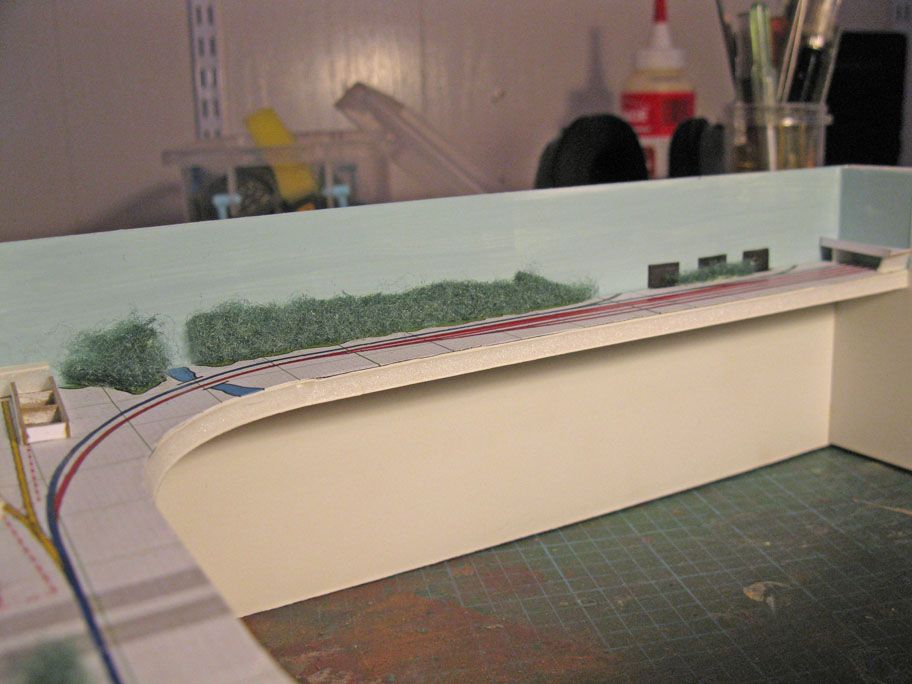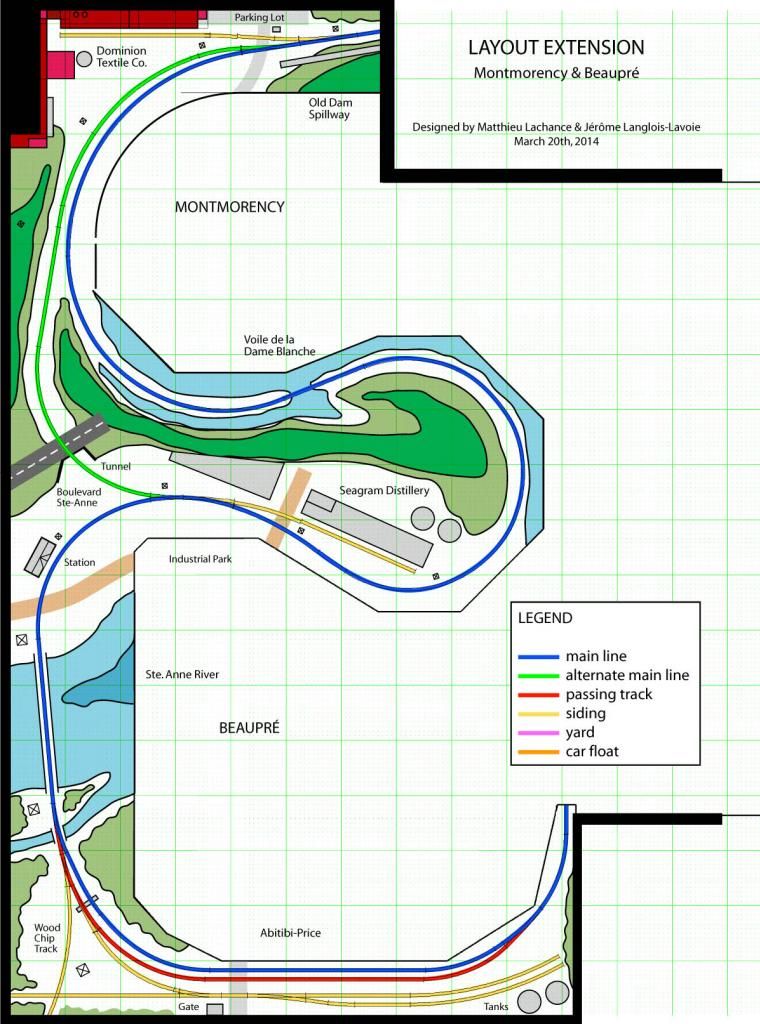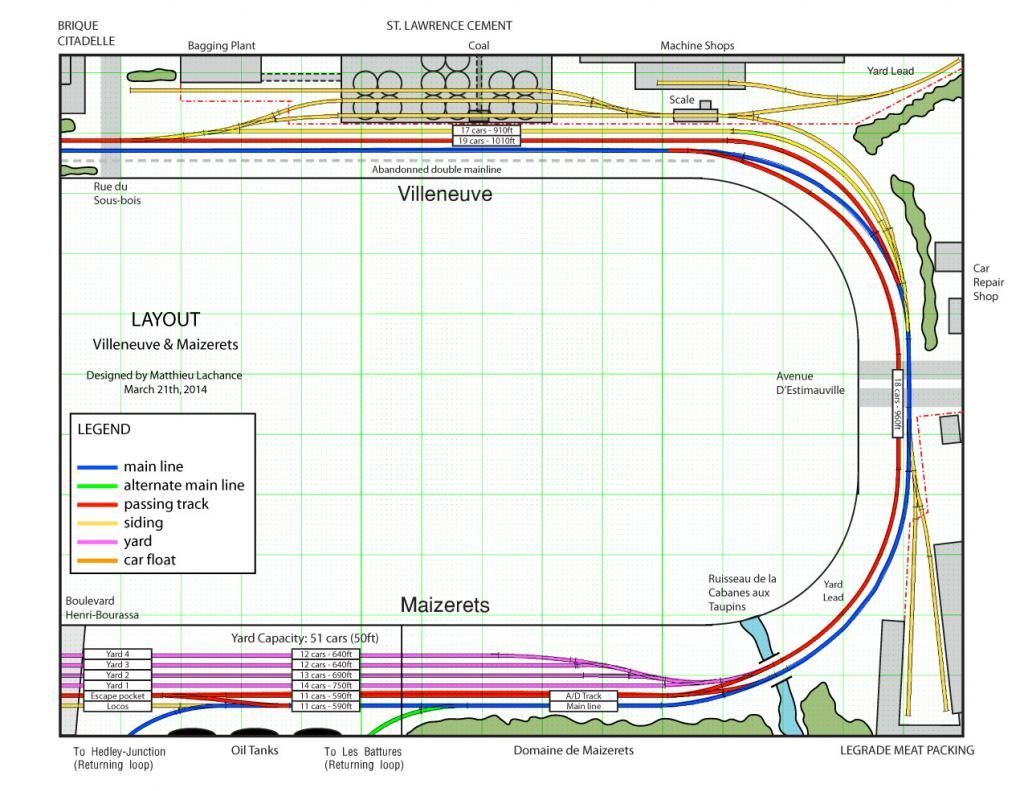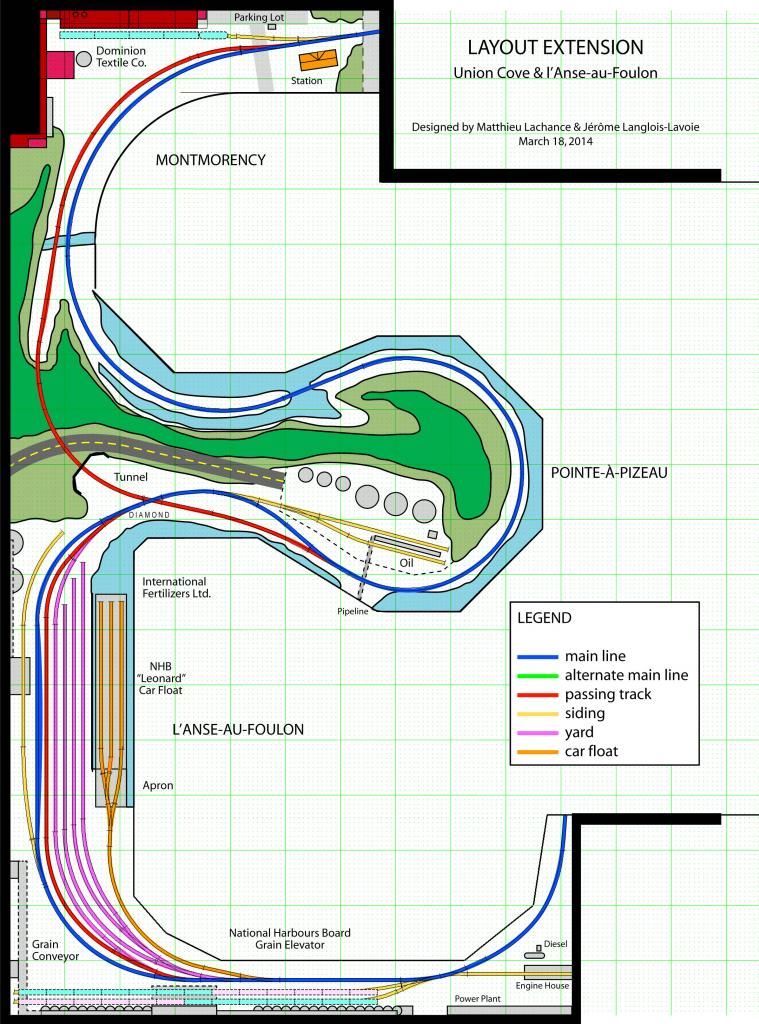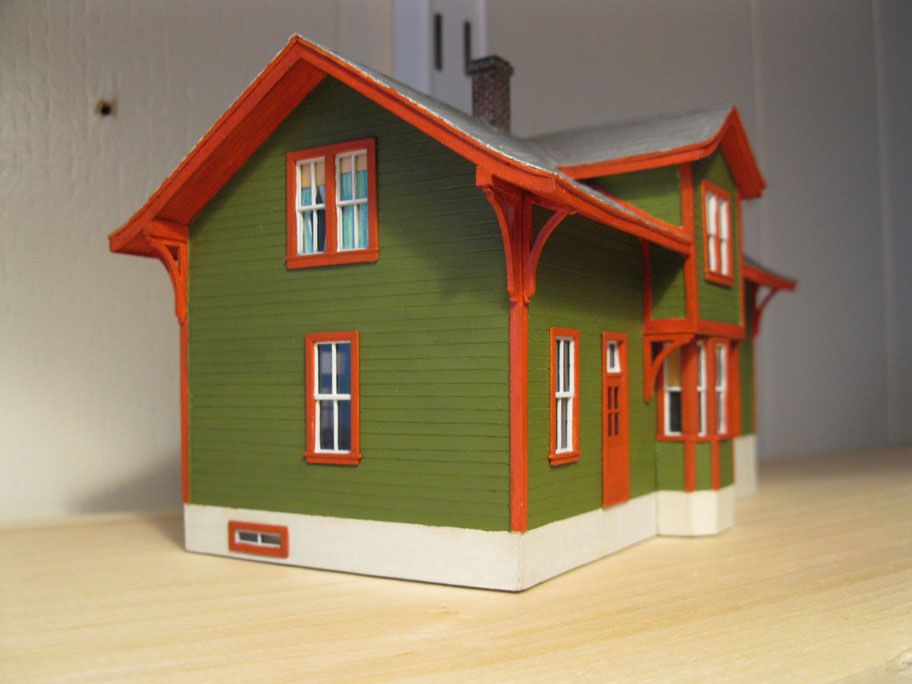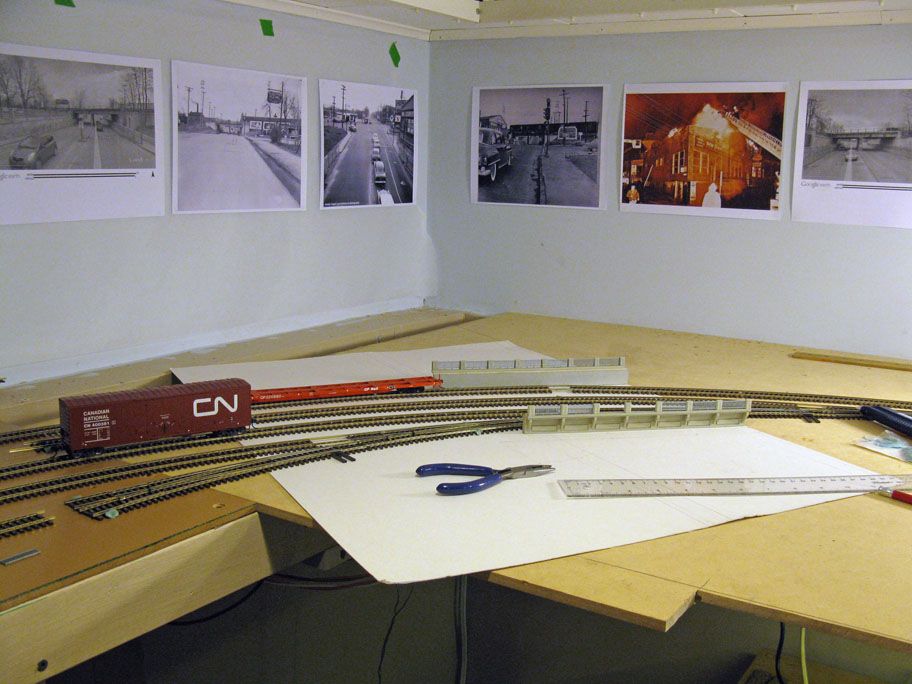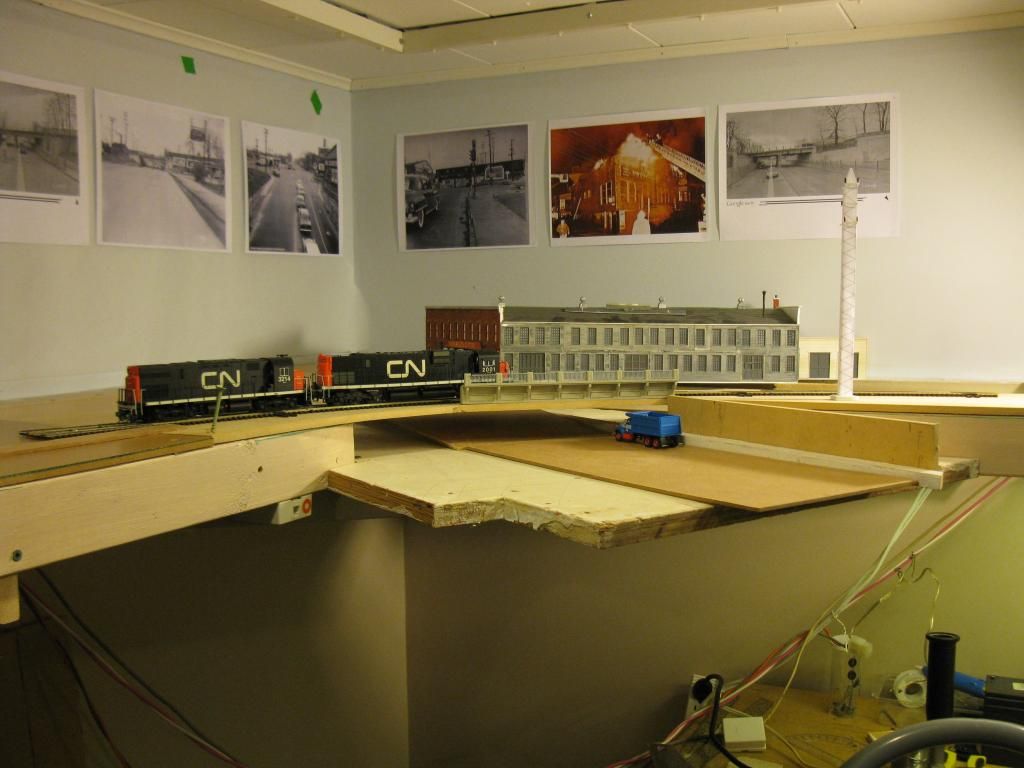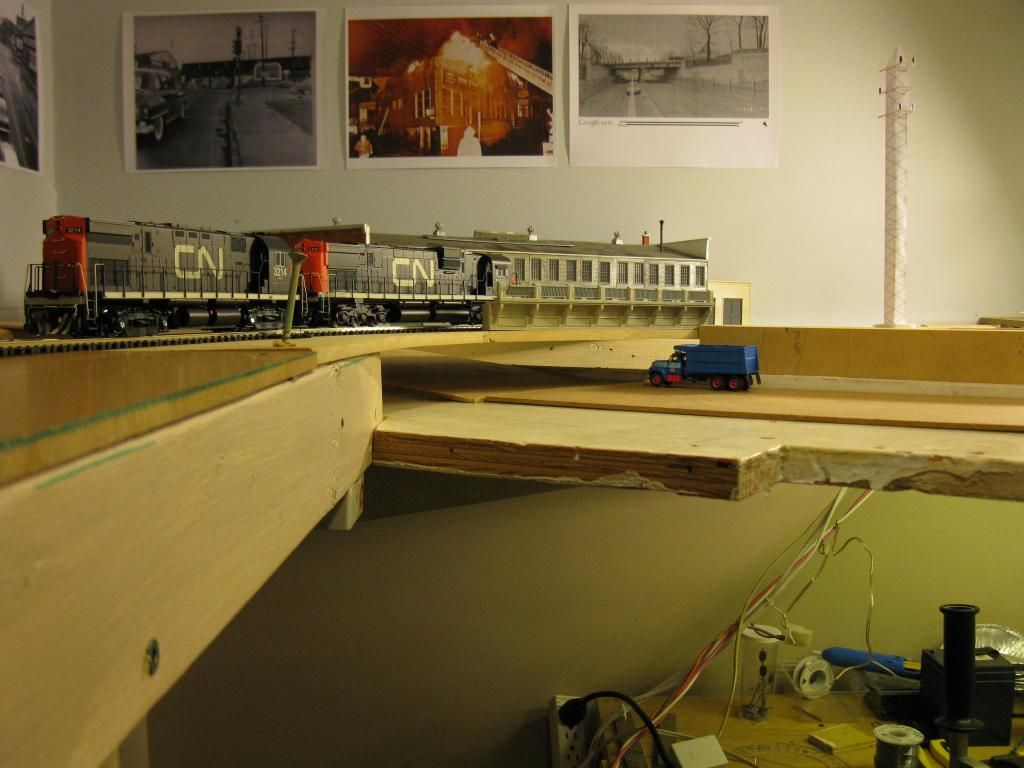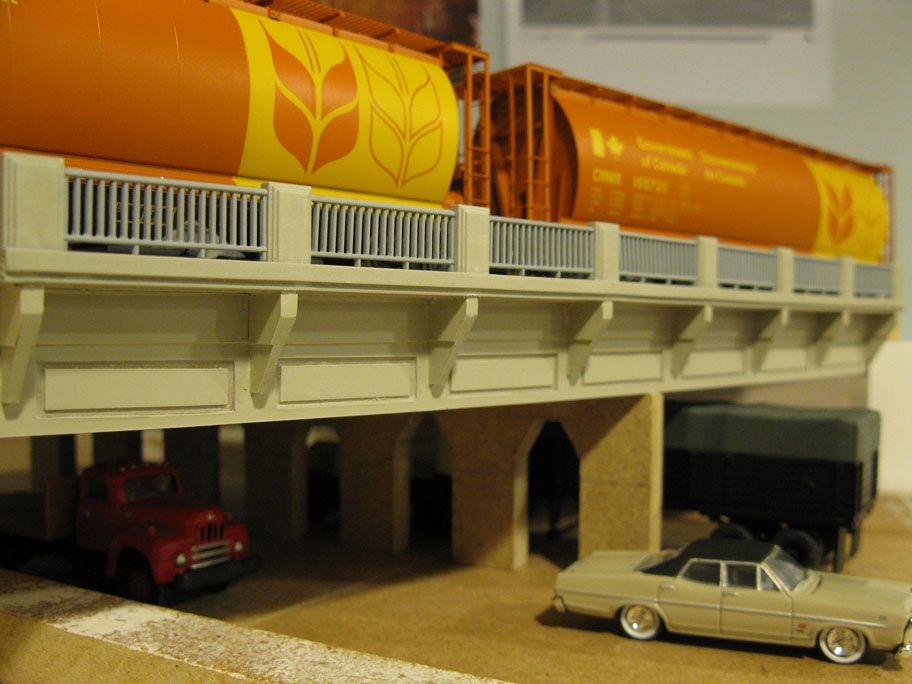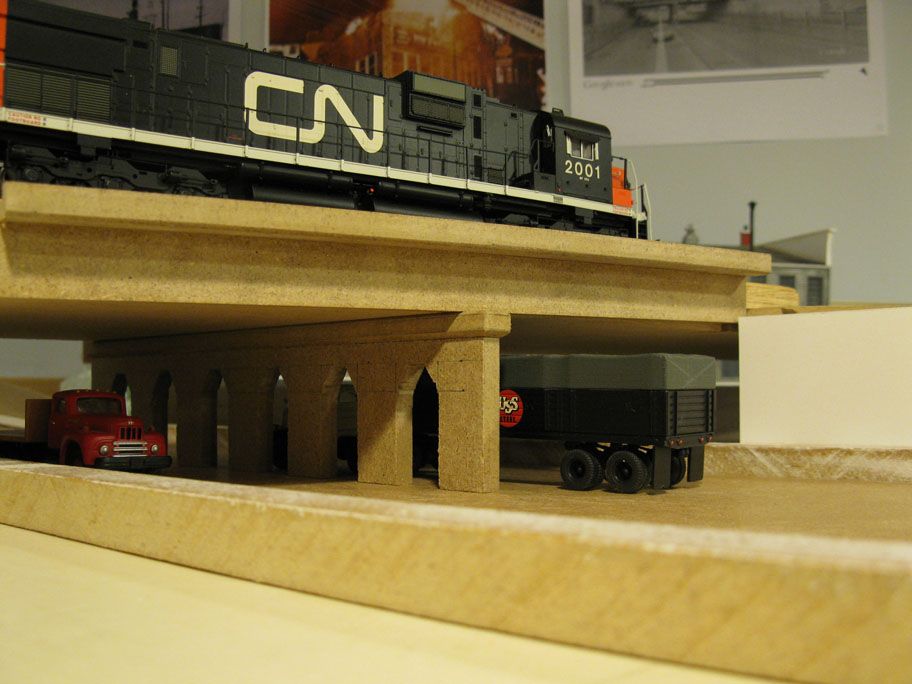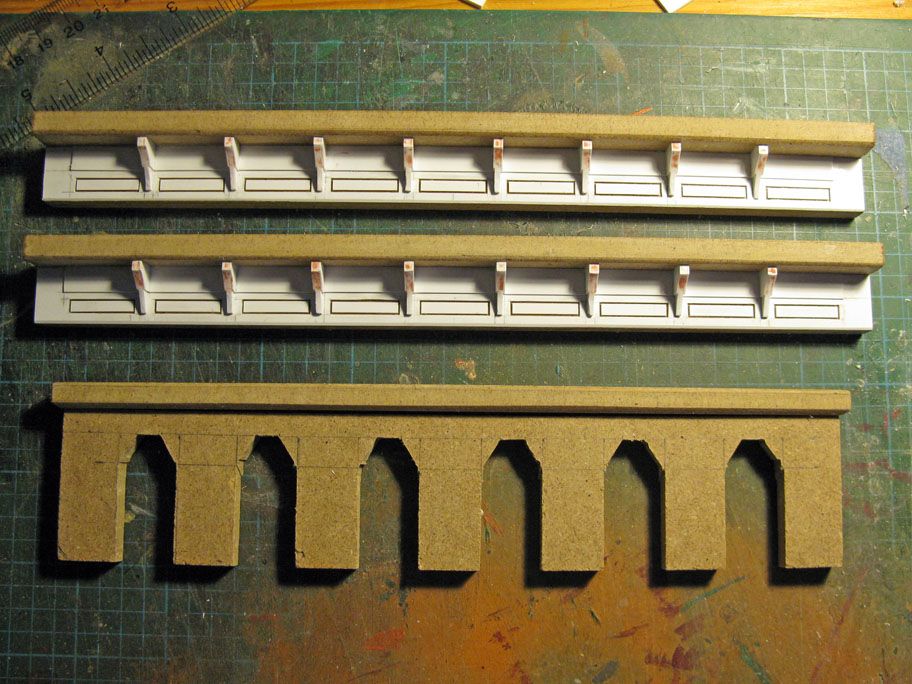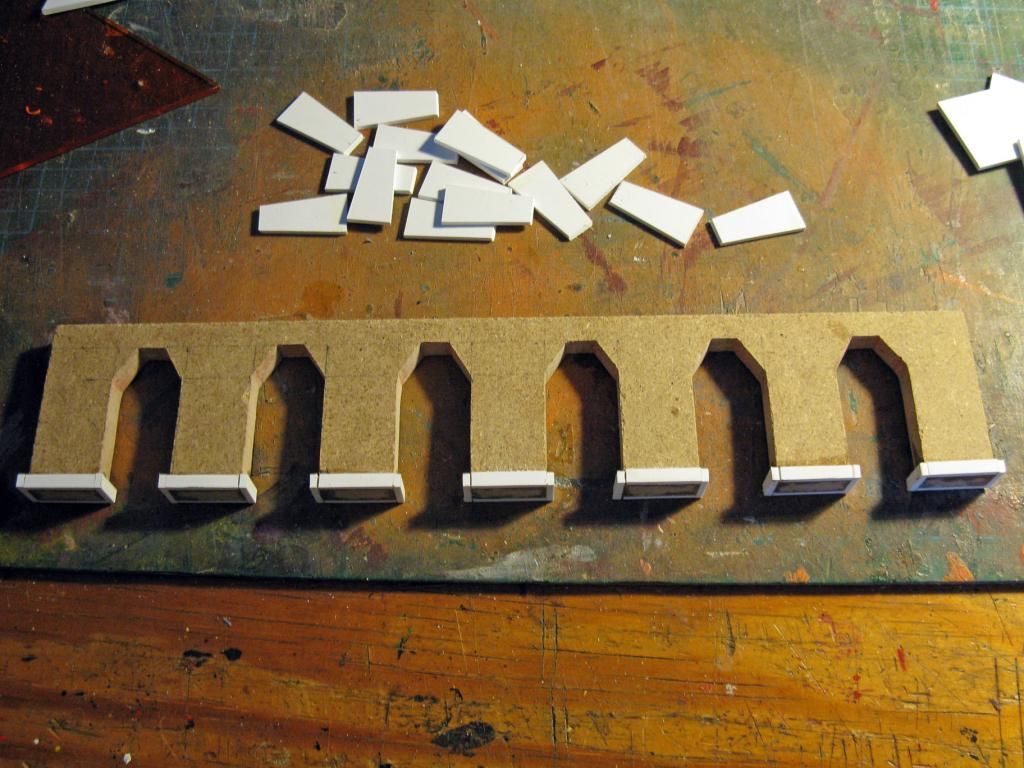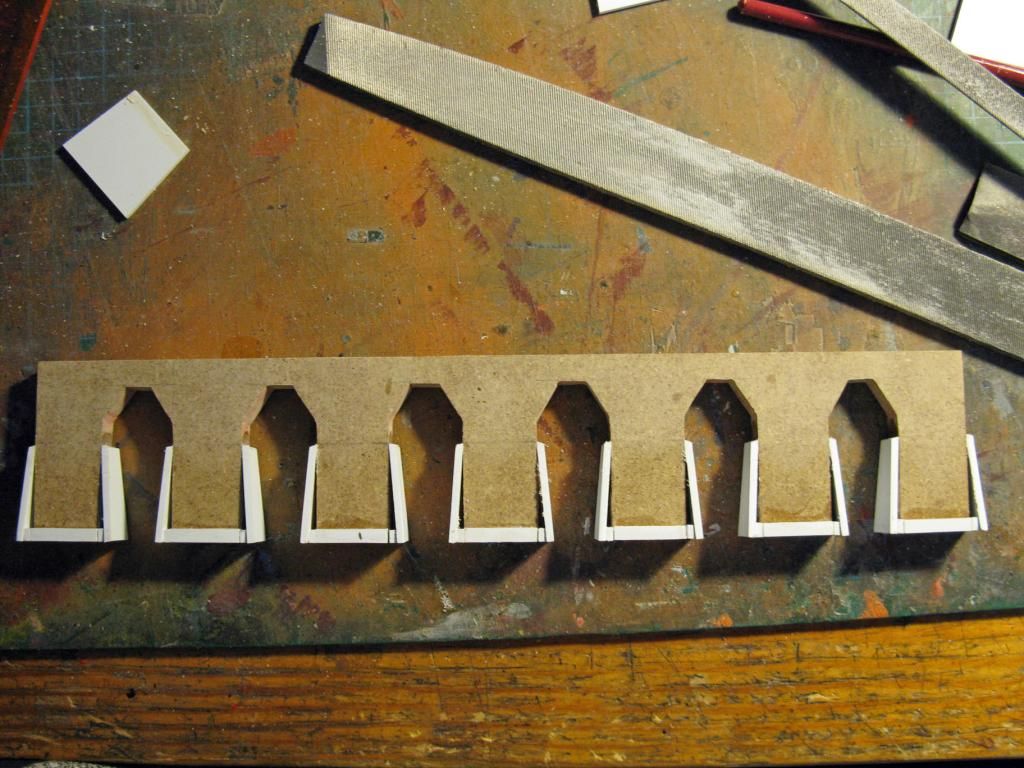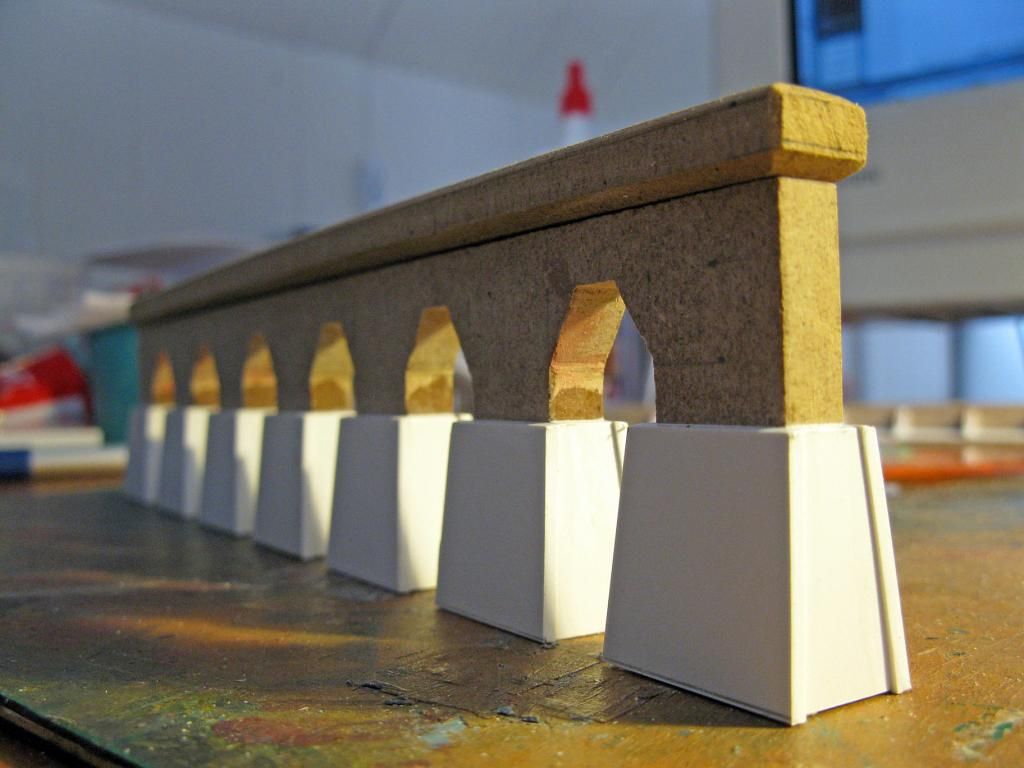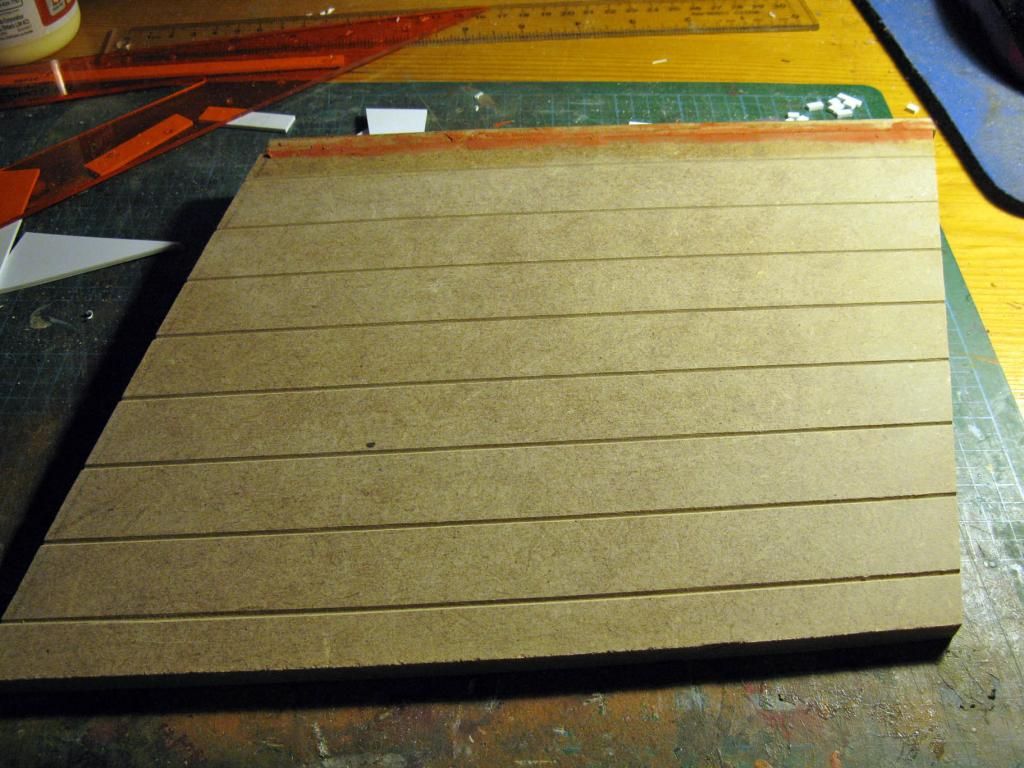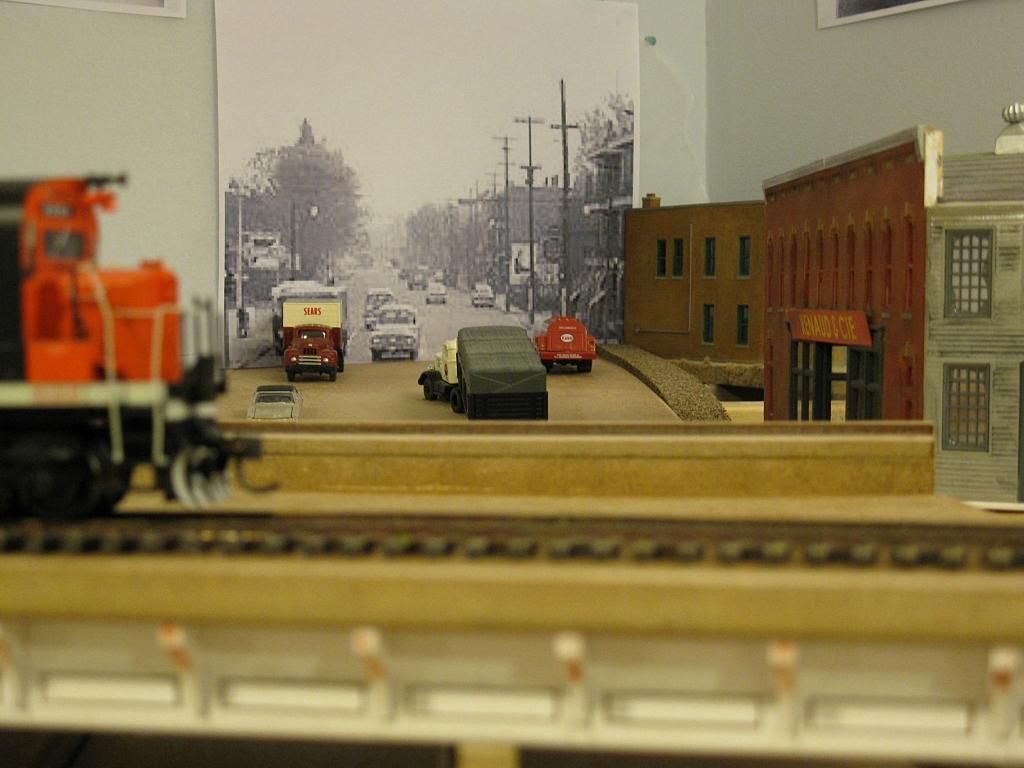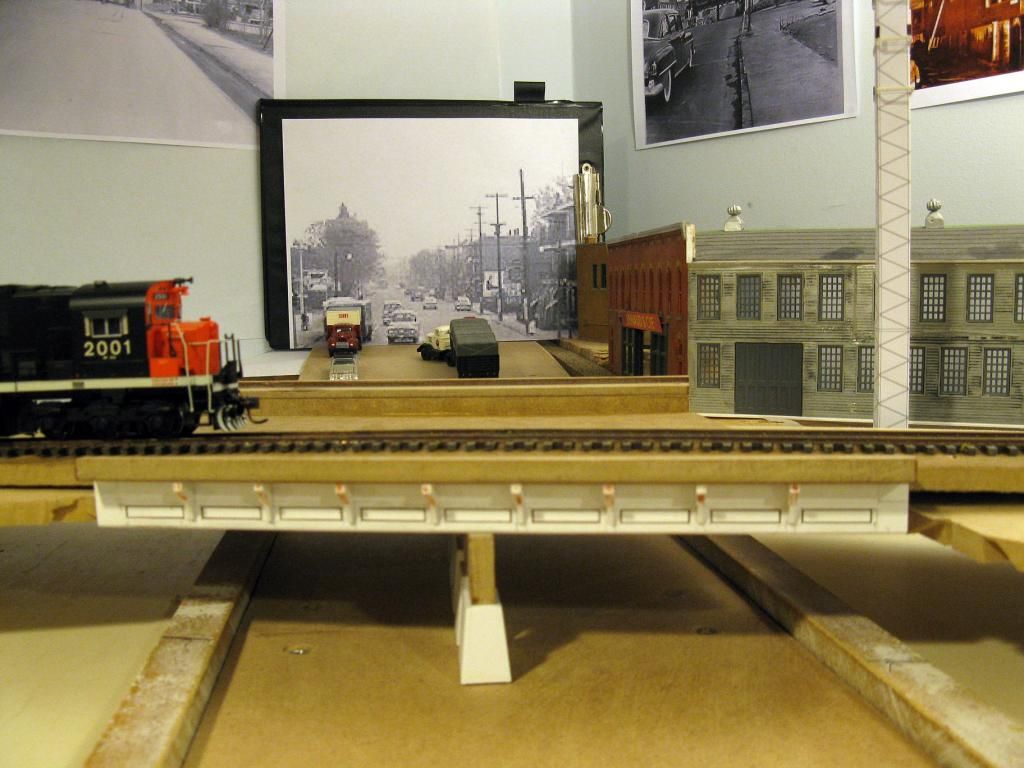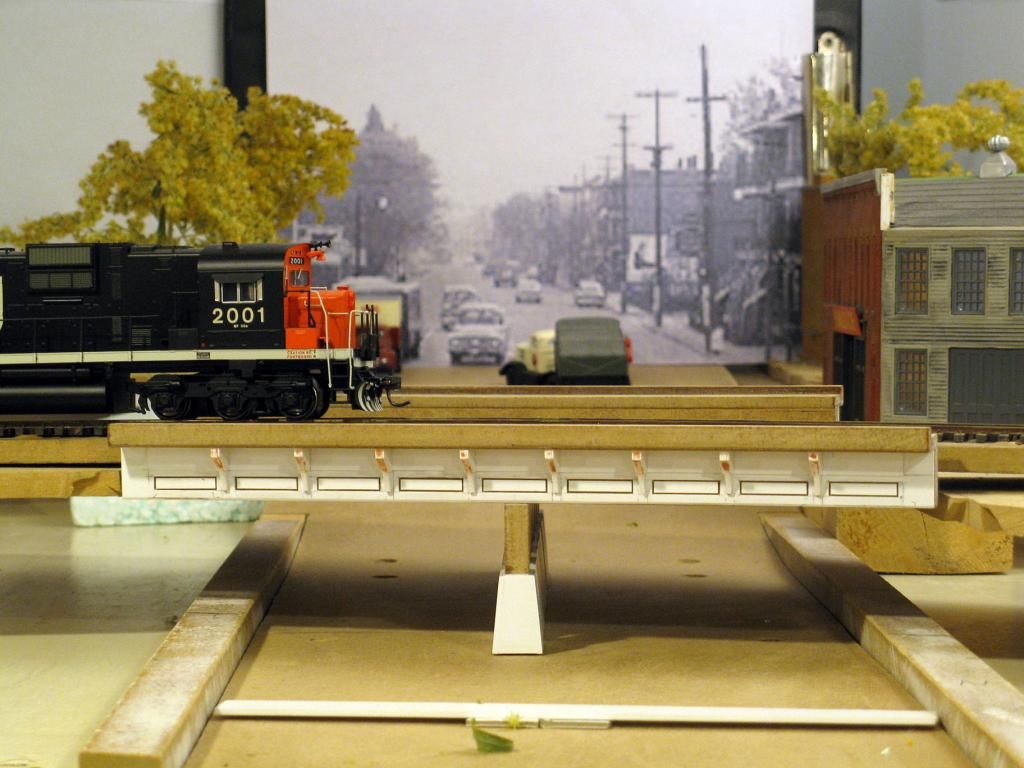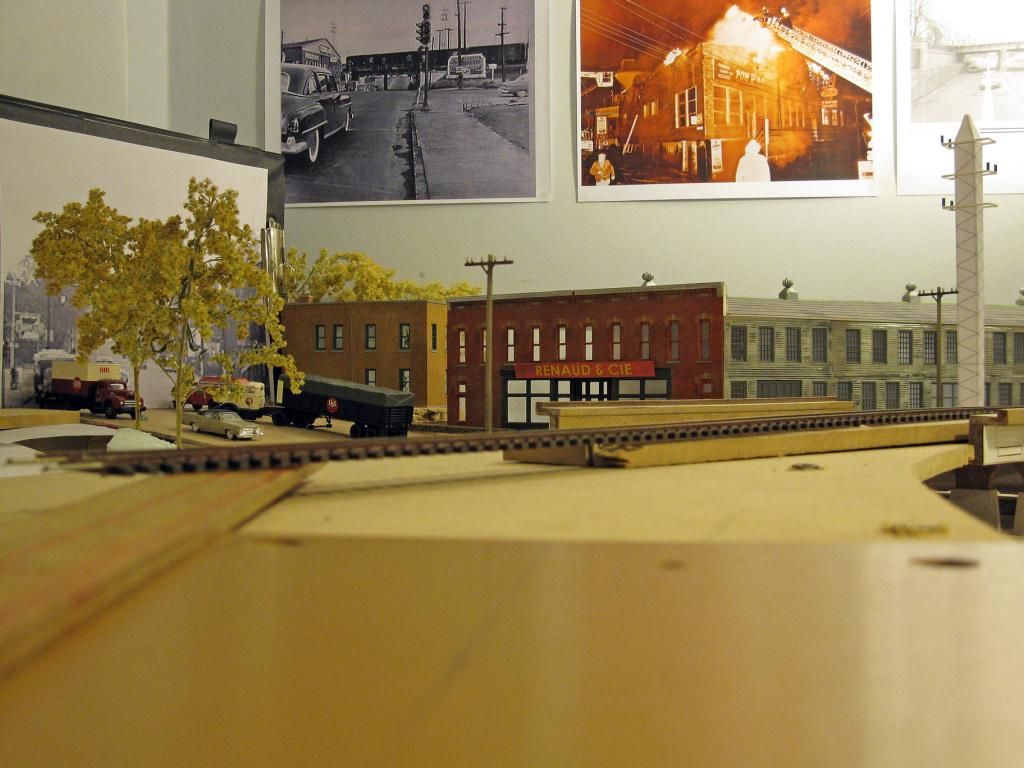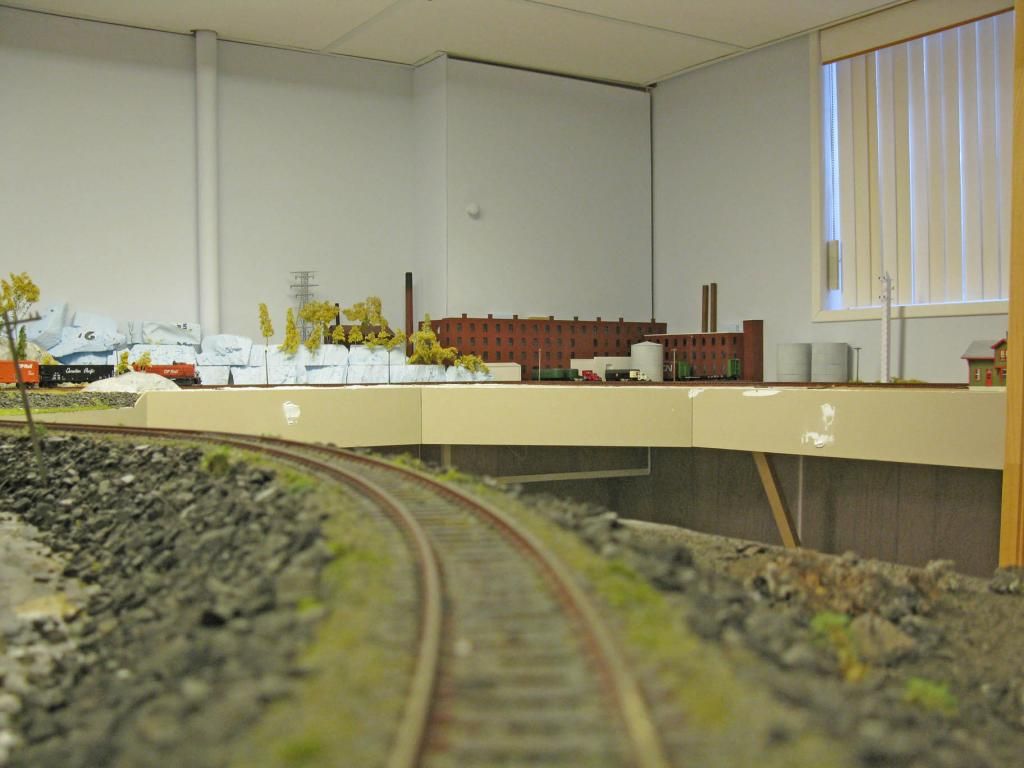I took the time to list commodities hauled over the Murray Bay Sub in the late 70s. In fact, I only bothered about the five selected industries served by the local switcher. As you know, we won't be bothering modelling the Charlevoix parts, which, except its incredible scenery was the most boring part of the line with very little variety in industries (a paper mill, a LPG dealer and General Cable in Clermont).
There was a few other industries as well between Limoilou and Beaupré, including two sawmills, a Sico Paint plant and a Shur-Gain grain elevator, but we won't bother about them. Un fortunately, we don't have any place to spare for them and, except one of the saw mill, most of them weren't rail-served by the earlu 80s.
I came to the conclusion about 51 car spots were shared by the five industries. Also, the yard can hold 51 cars (50ft car to be precise). That means there should be about 50 cars on the layout at any given time. Also, the shortest siding is at Beaupré. It can take 10 cars, 2 locomotives (a pair of 4-axles engines) and a Pointe-Saint-Charles caboose.
At this rate, five operating different trains are needed to replace all cars. A lot of action for a small layout! Once again, selecting credible rail-served industries show us you don't need a thousand tiny clients to make a layout busy, but a handful of good clients. The smallest industry have 4 spots and the largest can hold 18 cars into 5 different spots. It's good to know that if you spot 5 cars under a coal tipple, it only counts as one spot.
The week was also extremely busy trying to figure out typical operations at St. Lawrence Cement plant. Mr. Stéphane Mélançon was a big help in that matters. His uncle, an former employee from 1963 to 1968, was kind enough to recall his memories of that time. It's quite impressive to try to understand things from 50 years ago when you never actually saw them. Thanks to him, we now have a better understanding of the works behind a large cement plant.
Thursday, March 27, 2014
Saturday, March 22, 2014
St. Lawrence Cement Plant
Yesterday, we discussed a lot about my "Murray Bay Sub" project. I found Louis-Marie had the same questions about our Canardière Road overpass: lots of work and the scene doesn't match up with the prototype. There's something lacking. Also, by the end of the evening, Jérôme also pointed out we didn't need a real "yard" for our operating patterns. A stub-ended one, with a few storage tracks would be enough for our needs and would leave more space for interesting scenes like St. Lawrence Cement plant.
Nothing is set in concrete, but I think the three of us are fully aware we have to address a few issues before investing too much time in things that won't work for the best. Managing our time is more and more important. We can't afford to waste months trying to replicate things that don't make the layout better... and futher more, running!
I had a good talk with Louis-Marie about that and we agreed we should strive to get the most iconic scenes together with little effort. That means only modelling purposeful industries, having a layout plan that depicts a railray work day routine and simplified topography. It doesn't mean to go cheap and tkae shortcut, only reduce the number of parameters to better control their quality. In that respect, I think it's the good choice to make.
By the way, my model of the layout really paid off yesterday. No place for misunderstanding, everything was clear and discussions were positive because most unknown factors were physically displayed. I intend to continue using this strategy to develop ideas in the future. Next time, I'll have to do the other layout's room. That one is gonna be a scenic challenge and we all think redeveloping it won't be a piece of cake.
Thus, after all that chatting, fellow club members allowed me to test my concept. First of all, better start with an historic picture to be able to analyse if the layout catch the feeling of the real prototype. This one is taken from Joseph Testagrose Collection, available on Old Time Trains website:
And the same picture shot on the layout from the same spot.
A general view of the property. Note there should/will be an abandonned double mainline near the fascia is this configuration is agreed on.
This view is taken from the crossing too. I like the industrial look of a bunch of tracks running between telegraph and power lines.
This one is very nostalgic. When I was a kid in the 80s, it was the classic view we had on the train while lunching at the diner located just in front of the cement Plant every Saturday.
A general bird view from the East, looking west.
Overall shot of the scene. The plant may be huge but it doesn't overpower the scene. I really like the result, particularly the main line in front of the scene.
Conclusion? Positive results! This scene do looks like the real Murray Sub as it could be seen in Villeneuve from the 60s to the mid-90s.
Stay tuned!
 |
| Switching moves at the cement plant while CN freight train 522-523 is passing by. |
Nothing is set in concrete, but I think the three of us are fully aware we have to address a few issues before investing too much time in things that won't work for the best. Managing our time is more and more important. We can't afford to waste months trying to replicate things that don't make the layout better... and futher more, running!
I had a good talk with Louis-Marie about that and we agreed we should strive to get the most iconic scenes together with little effort. That means only modelling purposeful industries, having a layout plan that depicts a railray work day routine and simplified topography. It doesn't mean to go cheap and tkae shortcut, only reduce the number of parameters to better control their quality. In that respect, I think it's the good choice to make.
By the way, my model of the layout really paid off yesterday. No place for misunderstanding, everything was clear and discussions were positive because most unknown factors were physically displayed. I intend to continue using this strategy to develop ideas in the future. Next time, I'll have to do the other layout's room. That one is gonna be a scenic challenge and we all think redeveloping it won't be a piece of cake.
Thus, after all that chatting, fellow club members allowed me to test my concept. First of all, better start with an historic picture to be able to analyse if the layout catch the feeling of the real prototype. This one is taken from Joseph Testagrose Collection, available on Old Time Trains website:
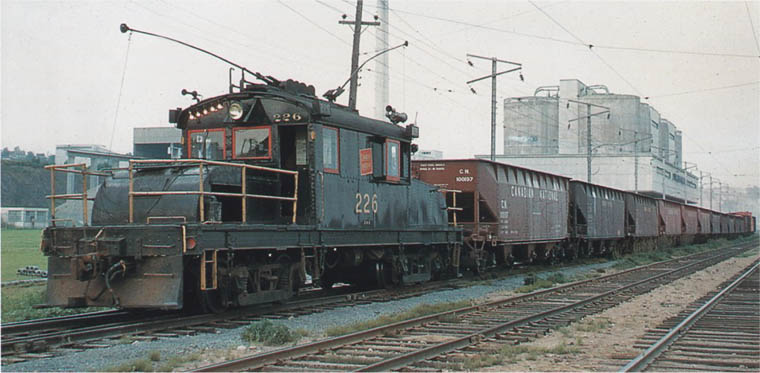 |
| CN 226 pulling a cut of gypsum hopper cars at Villeneuve in the late 50s |
And the same picture shot on the layout from the same spot.
A general view of the property. Note there should/will be an abandonned double mainline near the fascia is this configuration is agreed on.
This view is taken from the crossing too. I like the industrial look of a bunch of tracks running between telegraph and power lines.
This one is very nostalgic. When I was a kid in the 80s, it was the classic view we had on the train while lunching at the diner located just in front of the cement Plant every Saturday.
A general bird view from the East, looking west.
Overall shot of the scene. The plant may be huge but it doesn't overpower the scene. I really like the result, particularly the main line in front of the scene.
Conclusion? Positive results! This scene do looks like the real Murray Sub as it could be seen in Villeneuve from the 60s to the mid-90s.
Stay tuned!
Friday, March 21, 2014
Building Inside The Box
I took my afternoon off work and decided to make a model of the proposed fictious layout. I was curious to see how all things would work together.
Honestly, I'm rather satisfied, even surprised. It really feels like standing in Villeneuve and Maizerets back in the mid-80s. The huge cement plant looks just like the real thing and don't overwhelm the place too much. The yard is also extremely similar to the prototype, nothing fancy, just some tracks disappearing behind a concrete overpass. I also like the black oil tanks in the background, makes you feel there's some harbour activities behind the scene.
Here's a few shot of the model's model. Those familiar with our layout will recognize many structures I once presented and even tried to model.
Thursday, March 20, 2014
Thinking Inside The Box
We often hear "think outside the box". But when I think about layout design, it's always what you can do inside the box, or to be precise, the layout footprint. Space is at premium and we all dream of replicating something bigger than us, which we will never achieve in this lifetime.
The recent work on Dominion Textile plant really renewed my interest in this part of the layout. It has been almost 2 decades since I'm thinking about replicating Murray Bay Sub, particularly the Dominion Textile, St. Lawrence Cement and Beaupré's railway bridge.
Until today, all my efforts were fruitless, I can't even count how many times I tried and failed miserably. Honestly, designing stuff from afar is easier than trying to do something in your own backyard. Why? Too much near the goal, you lose focus and you waste your time on tiny insignificant details, thinking they really matter... which they don't matter that much in the end.
Recreating the Dominion really convinced me I could capture the feeling of our good old Côte-de-Beaupré area without having to reproduce any tiny bits. No need for the breathtaking Montmorency Falls nor the impressive Sainte-Anne-de-Beaupré Basilica.
What happened after this experiment last week? I decided to see if I could convert the entire layout into Murray Bay Sub. It would be great to have a real point-to-point layout with a real switcher job assignment. Also, the returning loops could be kept for continuous running.
First of all, I tried to figure out which industries were the most iconic. Quickly, I set up my mind on 5 industries... which at some point I tried to model:
1) Abattoir Legrade (meat packing): in business and rail-served until the early 80s. Think about grease tank cars, stock cars and reefers. I already built a mockup and tried twice to build a layout around this industry. I know Louis-Marie is a fan of this particular plant.
2) St. Lawrence Cement: in business until 1997, one of the largest customer. The building is impressive, large and immediately recongnizable. They had their own switcher, a GE 44-Ton, which we have a model of. Think about gypsum hopper, cement hopper (including slabside and Procor) plus CN and Pennsylvania coal hopper. We already started to build this large plant for the layout... Would be a waste to not complete it.
3) Domion Textile: in business until 1987-89, among the largest cotton mill in Canada until the business collapsed. The Montmorency plant is so iconic it was feature in a short movie! They received cotton from Southern United States, chemicals in tank cars and shipped their goods in boxcars.
4) Seagram Distillery: a large distillery in business until the late 80s and located in Beaupré. Little is known about rail traffic, but it was rail-served and they probably received grain and sugar for their whiskey. Occassional boxcars and reefers could also bring glass bottles and ship the goods all over the country. It was a larger customer and they had iconic buildings too...
5) Abitibi-Price Paper Mill: recently closed and torn down, it was one of the last and largest rail customer. They had their own switcher and a small yard with lots of tracks serving different part of the mill. The yard with the sidings and gates is a classic panorama from the area... I mean for people liking the subtle beauty of industrial wasteland! For the traffic, think about woodchip cars, newsprint boxcars, kaolin slur tank cars, chemical tanks and others.
Funny, no industries remain in my area. They have all close their doors between the mid-80s and the 2000s. The line is dead too, the Massif de Charlevoix train being a bad joke told by a clown (Cirque du Soleil). And all that was predictable for anybody looking at the cold hard fact. Three touristic trains later and they still didn't learn their lesson! Sometimes, I wish Horace Beemer was still alive to make fun of those wannabe rail barons. Enough said.
It's only an idea, but I think Murray Bay Sub has some foundation to get the best out of our layout footprint. All club members are aware something is wrong with Bassin Louise scene, maybe that could be an idea to get out of this particular issue. We will see. In the worst case scenario, it will have been a nice layout design practice. Remember, KEEP IT SIMPLE ST****!
And here's the conversion of Hedley-Junction to host St. Lawrence Cement plant and Legrade... but that's another story! And we will cover it another time. At least, I feel like things are balanced and take naturally their own space. Once again, I went with a scenic approach, trying to get every little bit of pure scenery I could to get the feeling a trains really running through some landscape.
The recent work on Dominion Textile plant really renewed my interest in this part of the layout. It has been almost 2 decades since I'm thinking about replicating Murray Bay Sub, particularly the Dominion Textile, St. Lawrence Cement and Beaupré's railway bridge.
Until today, all my efforts were fruitless, I can't even count how many times I tried and failed miserably. Honestly, designing stuff from afar is easier than trying to do something in your own backyard. Why? Too much near the goal, you lose focus and you waste your time on tiny insignificant details, thinking they really matter... which they don't matter that much in the end.
Recreating the Dominion really convinced me I could capture the feeling of our good old Côte-de-Beaupré area without having to reproduce any tiny bits. No need for the breathtaking Montmorency Falls nor the impressive Sainte-Anne-de-Beaupré Basilica.
What happened after this experiment last week? I decided to see if I could convert the entire layout into Murray Bay Sub. It would be great to have a real point-to-point layout with a real switcher job assignment. Also, the returning loops could be kept for continuous running.
First of all, I tried to figure out which industries were the most iconic. Quickly, I set up my mind on 5 industries... which at some point I tried to model:
1) Abattoir Legrade (meat packing): in business and rail-served until the early 80s. Think about grease tank cars, stock cars and reefers. I already built a mockup and tried twice to build a layout around this industry. I know Louis-Marie is a fan of this particular plant.
2) St. Lawrence Cement: in business until 1997, one of the largest customer. The building is impressive, large and immediately recongnizable. They had their own switcher, a GE 44-Ton, which we have a model of. Think about gypsum hopper, cement hopper (including slabside and Procor) plus CN and Pennsylvania coal hopper. We already started to build this large plant for the layout... Would be a waste to not complete it.
3) Domion Textile: in business until 1987-89, among the largest cotton mill in Canada until the business collapsed. The Montmorency plant is so iconic it was feature in a short movie! They received cotton from Southern United States, chemicals in tank cars and shipped their goods in boxcars.
4) Seagram Distillery: a large distillery in business until the late 80s and located in Beaupré. Little is known about rail traffic, but it was rail-served and they probably received grain and sugar for their whiskey. Occassional boxcars and reefers could also bring glass bottles and ship the goods all over the country. It was a larger customer and they had iconic buildings too...
5) Abitibi-Price Paper Mill: recently closed and torn down, it was one of the last and largest rail customer. They had their own switcher and a small yard with lots of tracks serving different part of the mill. The yard with the sidings and gates is a classic panorama from the area... I mean for people liking the subtle beauty of industrial wasteland! For the traffic, think about woodchip cars, newsprint boxcars, kaolin slur tank cars, chemical tanks and others.
Funny, no industries remain in my area. They have all close their doors between the mid-80s and the 2000s. The line is dead too, the Massif de Charlevoix train being a bad joke told by a clown (Cirque du Soleil). And all that was predictable for anybody looking at the cold hard fact. Three touristic trains later and they still didn't learn their lesson! Sometimes, I wish Horace Beemer was still alive to make fun of those wannabe rail barons. Enough said.
It's only an idea, but I think Murray Bay Sub has some foundation to get the best out of our layout footprint. All club members are aware something is wrong with Bassin Louise scene, maybe that could be an idea to get out of this particular issue. We will see. In the worst case scenario, it will have been a nice layout design practice. Remember, KEEP IT SIMPLE ST****!
And here's the conversion of Hedley-Junction to host St. Lawrence Cement plant and Legrade... but that's another story! And we will cover it another time. At least, I feel like things are balanced and take naturally their own space. Once again, I went with a scenic approach, trying to get every little bit of pure scenery I could to get the feeling a trains really running through some landscape.
Wednesday, March 19, 2014
Dominion Textile: the new industrial district
As you've seen, we are actually in the process of rebuilding a part of the layout that changed vocations many, many times. There's a lot of space, but many curves and obstacles.
After exchanging a few emails with Mr. Stéphane Mélançon from Montmorency, I was strongly convinced the Dominion Textile was the best choice to give life to this part of the layout. Also, it is nearer from the original intention to depict Murray Bay Subdivision through its iconic industries. Dominion Textile was the most impressive one and was even depicted in Frédéric Back's classic animated short movie "Crac!" in 1981. Anyway, a big thanks to Mr. Mélançon and I wish him good luck with is project to depict Montmorency in HO scale. That was probably the most busiest and interesting industrial area on Murray Bay Sub before the 90s.
Life is a strange thing. I always feels like I'm going back to my roots... My grandmother used to say "the first choice is always the best". You know what? She was right. And doing the Dominion Textile is going back to my highschool days, when I rided my bike 30km to get DMP modular walls at the local hobby shop to build QRL&PCo hydroelectric dam and loco shops.
Track plan was slightly modified. We got rid of the wye and passing track near the tunnel. We felt it overcrowded the place and was redundant in terms of operation.
At first, I thought 2 industrial sidings would be a good idea to maximise operability, but finally, I settled on a single track, like the prototype. As always, "less is more"...
The next step is to think about how buildings will work together to bring life and credibility to the scene. When in high schools, back in 1997, I made a 3D model of Dominion Textile using an archaic 3D modelling software (3D Walk-Through if my memory serves me right). From that time, I acquired a good idea of this plant. The most iconic part was the original building, with it's italianate staircase towers. They were the only fancy thing on this building, but forever made an impression on me as a kid. Definitetely a nice, efficient and inspiring 19th century industrial design.
To depict best this building, I should use Walthers Front Street Warehouse kit (two of them) to represent the mill. Middlesex Manufacturing kits I have will be used to make the rail-served warehouses. Various DPM and other kits will be used to make the boiler room.
Here's a few tries with Photoshop. I think it captures well the prototype, even if the configuration isn't similar.
Scenery around the cotton mill will be made up of industrial parking lots, gravel roads and lots of electric poles of various shapes (QRL&PCo main hydroelectric dam was located behind Dominion Textile, thus a lot of poles and pylons were spreading from there). Maybe I'll try to reproduce the dam spillway that ran along the track. I remember well there was an old grafitti made in the late 1970s on it's concrete piles spelling in giant letters: "Z A P P A"... I always thought it was about Frank Zappa, who knows! Anyway, that will have to be mockuped directly on the layout.
If I have place, I'll use my model of Beaupré station as a stand-in for Montmorency Station. Both building were fairly similar and painted in the same bright orange and olive green scheme. The station was destroyed by CN circa 1978, just like other stations on the line.
After exchanging a few emails with Mr. Stéphane Mélançon from Montmorency, I was strongly convinced the Dominion Textile was the best choice to give life to this part of the layout. Also, it is nearer from the original intention to depict Murray Bay Subdivision through its iconic industries. Dominion Textile was the most impressive one and was even depicted in Frédéric Back's classic animated short movie "Crac!" in 1981. Anyway, a big thanks to Mr. Mélançon and I wish him good luck with is project to depict Montmorency in HO scale. That was probably the most busiest and interesting industrial area on Murray Bay Sub before the 90s.
Life is a strange thing. I always feels like I'm going back to my roots... My grandmother used to say "the first choice is always the best". You know what? She was right. And doing the Dominion Textile is going back to my highschool days, when I rided my bike 30km to get DMP modular walls at the local hobby shop to build QRL&PCo hydroelectric dam and loco shops.
Track plan was slightly modified. We got rid of the wye and passing track near the tunnel. We felt it overcrowded the place and was redundant in terms of operation.
At first, I thought 2 industrial sidings would be a good idea to maximise operability, but finally, I settled on a single track, like the prototype. As always, "less is more"...
The next step is to think about how buildings will work together to bring life and credibility to the scene. When in high schools, back in 1997, I made a 3D model of Dominion Textile using an archaic 3D modelling software (3D Walk-Through if my memory serves me right). From that time, I acquired a good idea of this plant. The most iconic part was the original building, with it's italianate staircase towers. They were the only fancy thing on this building, but forever made an impression on me as a kid. Definitetely a nice, efficient and inspiring 19th century industrial design.
To depict best this building, I should use Walthers Front Street Warehouse kit (two of them) to represent the mill. Middlesex Manufacturing kits I have will be used to make the rail-served warehouses. Various DPM and other kits will be used to make the boiler room.
Here's a few tries with Photoshop. I think it captures well the prototype, even if the configuration isn't similar.
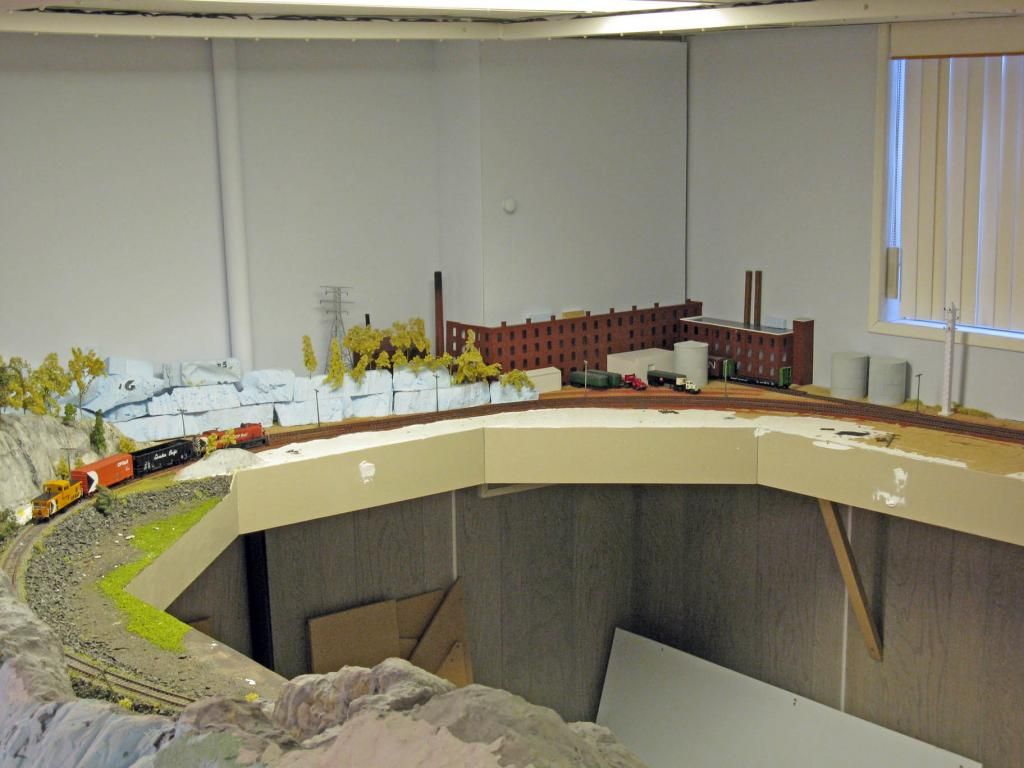 |
| Original mock up depicting Donnacona Fiberboard Co. plant |
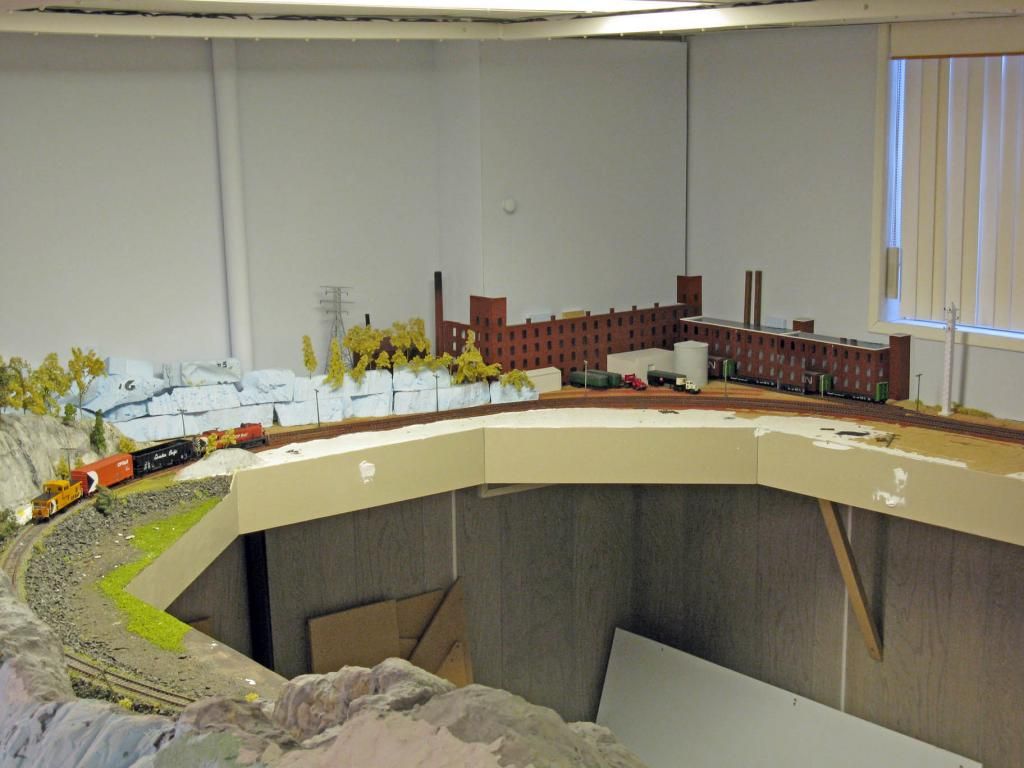 |
| Digitally altered mock up depicting Dominion Textile's Montmorency plant |
Scenery around the cotton mill will be made up of industrial parking lots, gravel roads and lots of electric poles of various shapes (QRL&PCo main hydroelectric dam was located behind Dominion Textile, thus a lot of poles and pylons were spreading from there). Maybe I'll try to reproduce the dam spillway that ran along the track. I remember well there was an old grafitti made in the late 1970s on it's concrete piles spelling in giant letters: "Z A P P A"... I always thought it was about Frank Zappa, who knows! Anyway, that will have to be mockuped directly on the layout.
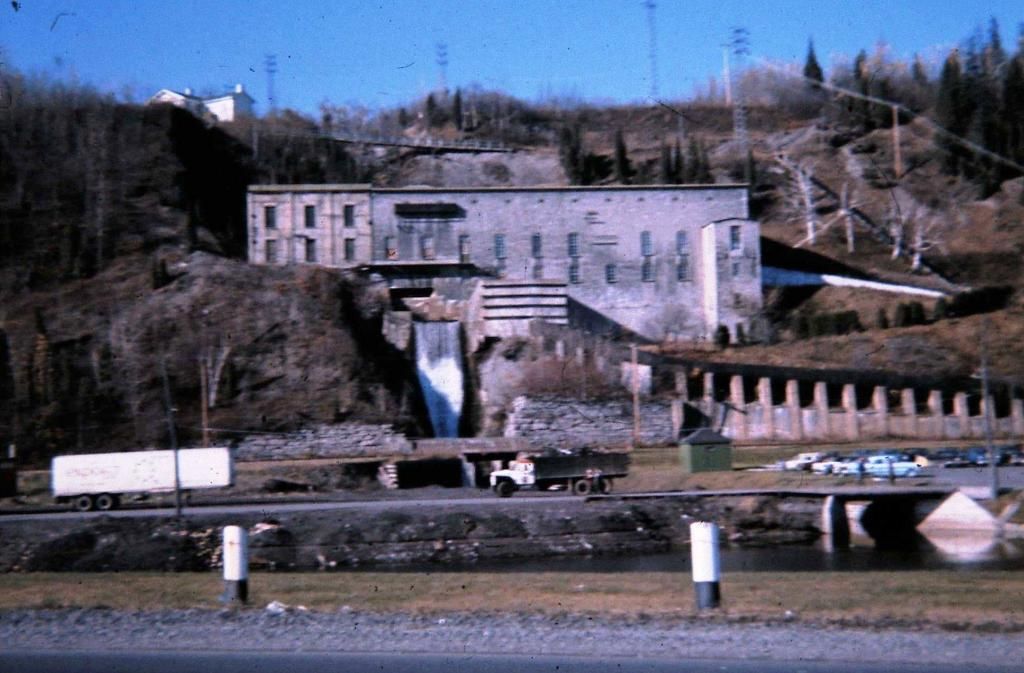 |
| The hydroelectric power plant and its iconic spillways prior to demolition in late 70s |
 |
| Lots of electric poles near the power plant |
 |
| Track runs near the cliff in Montmorency area, just like the layout. |
If I have place, I'll use my model of Beaupré station as a stand-in for Montmorency Station. Both building were fairly similar and painted in the same bright orange and olive green scheme. The station was destroyed by CN circa 1978, just like other stations on the line.
Sunday, March 16, 2014
Canardière Road Overpass WIP
 |
| Carnadière Road, looking West. |
Canardière Road overpass is an iconic railway spot in Quebec City. For this reason, particular attention is spent on tedious details to make it as true as possible to the real thing. On the old picture, you can see at left Lairet-Station, a station build for the students of a nearby college in the late 20s. At right, you can see an old bottling plant, farm implement warehouse and linoleum dealer building. It burned down in a spectacular fire in the late 60s... and was rail-served!
First was finding the correct geometry of the bridge since it's located on a curve and the real one is on a straight line. It was quite tricky because many curved turnouts overlap there... If we mess up this step, we could have serious problem when laying tracks in the yard.
Basically, the overpass is MDF covered with styrene sheet to recreate intricate Art Deco details. The original structure was built in 1931, during the recession. My first version, built about 3 years ago, was done with Rix Products highway overpass. It was OK, but clearly out of proportion.
And here's the new one:
We even made some grooves under the deck to simulate concrete girders. May sound silly to most of us, but I think this kind of little details help to be proud of your own work.
The overpass and scenery were "mockuped" last week. The result is quite convincing. However, fitting the backdrop, worst, finding or taking a suitable picture may be impossible.
Next step is to make the retaining walls. It should be far easier than the bridge itself.
Saturday, March 15, 2014
Dominion Textile? - Reshaping the Mountain
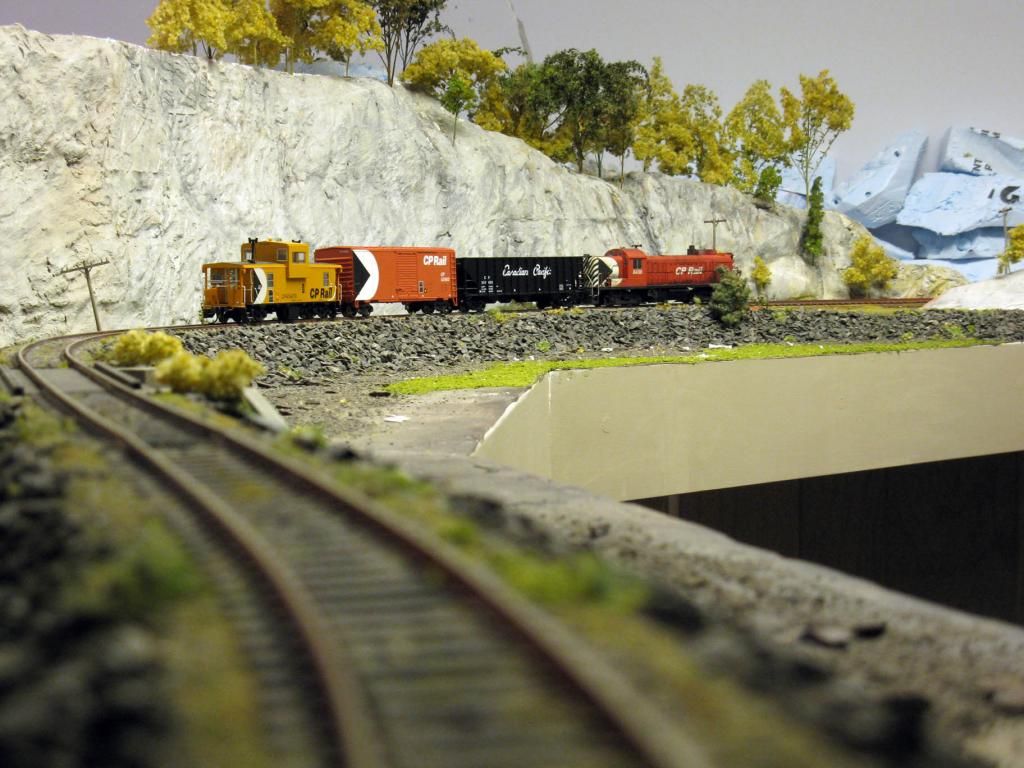 |
| A short CPR local freight is approacing the plant. |
Yesterday, we decided to finally improve the mountain scenery. Louis-Marie, the conceptor behind this impressive landscape, always had serious doubts about the Rockies look of the ridge over the tunnel portal.
Thus, the mountain height was shortened, and the hills were extended to the right, helping to blend the scenery more naturally with the industrial scene next to it.
A new industry has been set, loosely inspired by Donnacona Fiberboard Co. In fact, it looks a lot like Dominion Textile plant at Montmorency on Murray Bay Sub. Also, the landscape isn't that far from what existed there back in the 70s and 80s. Thus, I'm seriously thinking about converting this factory complex into a proto-freelanced Dominion Textile, which I have fond memories from my childhood. That would make more sense according to our layout theme.
I'll see if I try to model the old electric power station plume that still exist. It would be located along the blue styrofoam ridge.
I'll see if I try to model the old electric power station plume that still exist. It would be located along the blue styrofoam ridge.
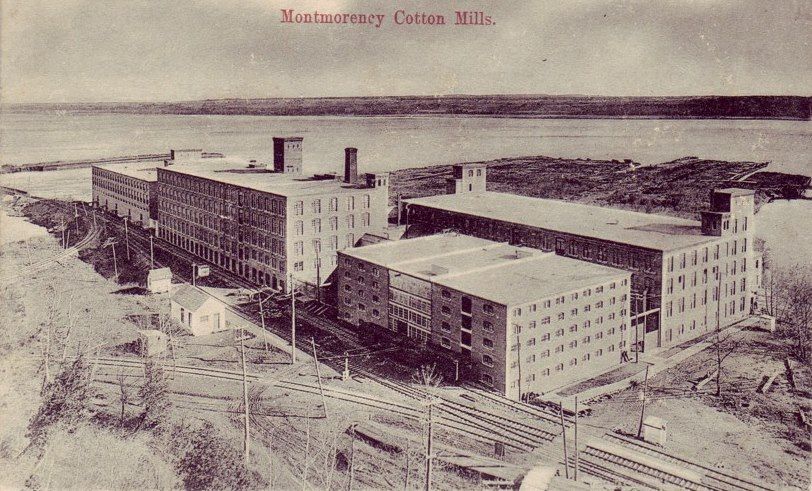 |
| Dominion Textile - Early 20th Century |
Subscribe to:
Posts (Atom)
